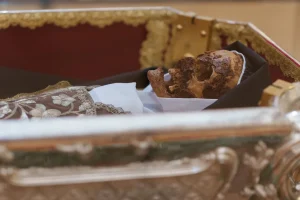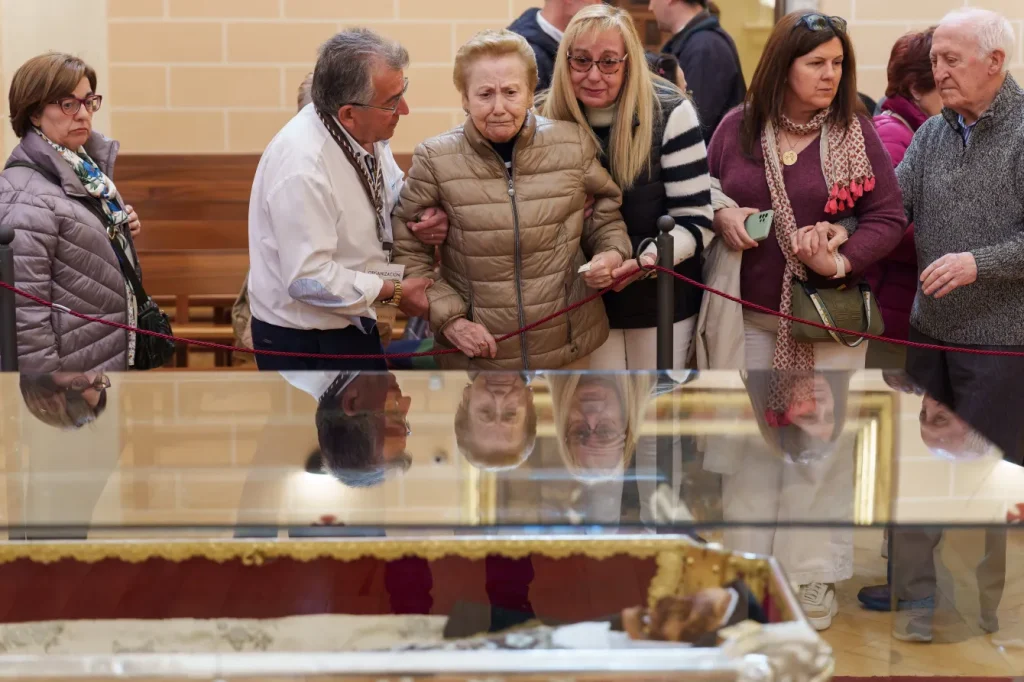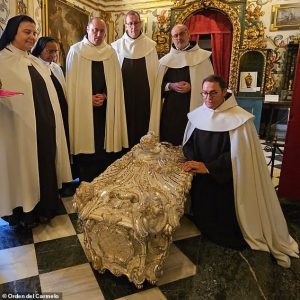In an awe inspiring moment of faith and history, the remarkably well preserved corpse of 16th century Catholic saint, Saint Teresa of Jesus, was unveiled to the public for the first time in over a century.
The display took place on Sunday, May 11, at the Basilica Annunciation of Our Lady of Mount Carmel in Spain’s Salamanca province, drawing hundreds of emotional pilgrims, clergy, and researchers. The unveiling marked only the third public veneration ceremony of the saint’s body since her death in 1582, with the previous events occurring in 1760 and 1914.
Saint Teresa, a Discalced Carmelite nun and a towering figure in Catholic mysticism, was placed inside a glass coffin for viewing. While the skeletal nature of the body was evident, observers noted that parts of her corpse, especially the face and foot, remained strikingly intact despite the passage of 440 years.

The coffin was opened by members of the Discalced Carmelite order, including nuns, monks, and priests, who also retrieved relics of her heart, hand, and arm for study and religious purposes. Comparisons with archival photographs from 1914 confirmed the body’s preservation, leaving researchers stunned.
The rare display evoked strong emotions among the faithful. Many were seen praying, crying, and kneeling before the glass coffin, overwhelmed by the tangible connection to the revered saint.
Saint Teresa of Jesus, also known as Saint Teresa of Ávila, was canonised in 1622 and declared a Doctor of the Church in 1970, one of the few women to receive such recognition. Her life, marked by spiritual reform and mystical writings, continues to inspire millions worldwide.
This once-in-a-lifetime opportunity to witness the saint’s remains is expected to deepen devotion and revive interest in her life and teachings, as well as prompt renewed discussions among scientists and religious historians on the phenomenon of incorruptibility.
The public viewing is part of an ongoing initiative by the Carmelite order to honor their most iconic member while allowing both spiritual reflection and academic examination.




